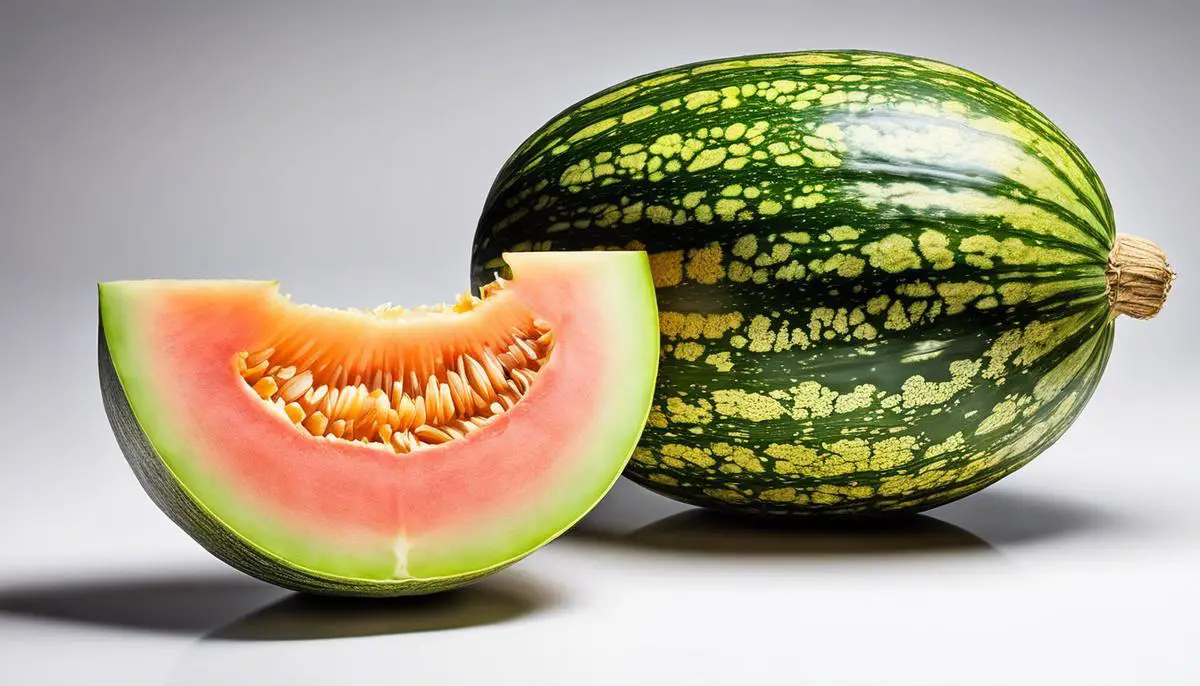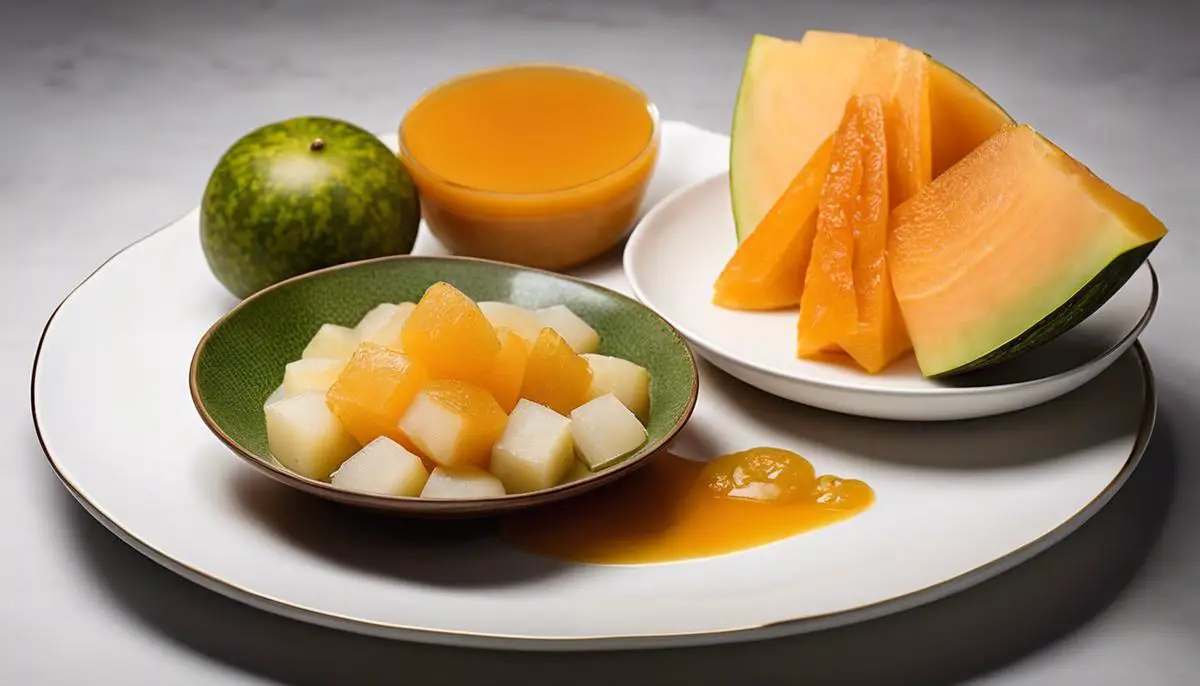
If one were to embark on a quest to find a fruit that boasts a rich history, unique nutritional benefits, and diverse culinary uses, they need look no further than the humble Casaba Melon. Native to Asia Minor, this melon has journeyed far and wide to earn its place amongst the produce aisles of continents, offering both its refreshing taste and impressive nutrient portfolio to those who indulge. Beyond its appealing taste, what really distinguishes the Casaba Melon is its multifaceted versatility, as it shines not just on our plates as a staple food, but also in scientific investigations of nutrition and health. A fruit this impressive certainly merits an in-depth exploration.
Casaba Melon: Origins & Nutritional Value
Adventures in the culinary world can take us to new and exciting places, and sometimes, those travels lead to delightful discoveries like the Casaba melon. Named after a town in Turkey, this member of the muskmelon family boasts a unique variable that sets it apart from its sweeter cousins. Unlike the common cantaloupe or honeydew with their familiar sweetness, the Casaba offers a slightly tart, yet mildly sweet taste profile, making it the perfect confidant to balance out the flavors in any fruit salad or cocktail.
However, the Casaba melon isn’t just an interesting flavor experience – it’s also a nutritional powerhouse. This golden yellow summertime delight is replete with Vitamin C and B6, supporting our immune system and brain health. To add to the allure, the Casaba is low in calories and high in water content, providing a guilt-free treat while still offering that much-needed hydration on hot summer days. So next time you’re rifling through for a new flavor experience, let Casaba melons transport you to the sun-dappled shores of Turkey. This unique, nutrition-packed fruit promises to take your culinary adventures to new heights and make your meals not only more diverse, but healthier too.

Scientific and Culinary Uses of Casaba Melon
Venturing beyond the usual fruit salad and cocktail use, the casaba melon holds a world of possibilities for the culinary adventurer! Picture this: a chilled casaba melon soup to grace a hot summer day with a refreshing and unique appetizer, or a slow-cooked casaba melon-chipotle sauce to slather on grilled chicken, introducing a sweet heat that turns a basic meal into an exotic feast. Both a torchbearer of innovation and an echo of traditional, homey flavors, the casaba melon is versatile enough to be transformed into savory roasts, zesty salsas, relishes, and marmalades that would add layers of complexity to any dish.
But the beauty of the casaba melon extends beyond its taste and culinary uses. In fact, it is also revered for its contributions to the scientific community. Its robustness in an array of climates has positioned it as ideal for studying plant genetics and adaptability. Researchers have noted the casaba melon’s robust chromosome structure and its interesting mechanisms of survival during water scarcity, making it an interesting subject for further studies on drought-resistance. Lastly, its antimicrobial properties have sparked interest in the potential development of natural food preservatives, a topic that is increasingly important in a world conscious about sustainability and health. So, whether in the kitchen creating culinary masterpieces or in the labs driving scientific discovery, the casaba melon surely deserves a spot under the limelight.

Cooking and Pairing Techniques with Casaba Melon
Diving into the culinary uses of Casaba melon, there are numerous techniques that can bring out its subtly sweet flavor and enhance various recipes. The melon’s firm texture lends itself well to being cubed and added to salsas or relishes, where it can absorb surrounding flavors while providing a crisp, refreshing counterpoint. Additionally, Casaba can be transformed into a marmalade, which is an excellent way to preserve and highlight its unique taste. With a mild flavor profile, the melon marmalade melds perfectly with the zesty hit of citrus and serves as a delightful spread on a morning toast or a glaze for poultry and fish.
Pushing boundaries in the kitchen with Casaba melon is an adventure in itself. With a bit of creativity, you can break away from the typical raw melon consumption. Take, for example, a chilled Casaba melon soup. Essentially a liquified fruit salad, the soup brings out the best of the melon’s characteristics, creating a burst of refreshing flavor that works wonders as an appetizer on a hot summer’s day. Or consider a slow-cooked Casaba melon-chipotle sauce for grilled chicken. Here, the sweetness of the melon mellows the fiery chipotle, yielding a vibrant, rich sauce that will bring your chicken or any grilled entree to life.
Exploring savory avenues with this robust melon is also an eye-opener. A slowly roasted Casaba melon offers a phenomenal blend of sweet and savory that pairs incredibly well with roast meats or as a unique side dish. Cut the melon into wedges, drizzle with a mixture of olive oil, salt, pepper, and herbs, and roast until caramelized. The end product is a harmony of profound flavors, a testament to the versatility and adaptability of the Casaba, both in the kitchen and in plant genetics. Next time you encounter a Casaba melon, consider the multitude of culinary possibilities it offers and don’t hesitate to experiment. After all, part of what connects us as food lovers is the shared joy of discovering new flavors and techniques.

With your newfound knowledge of the Casaba Melon, we hope you’re inspired to explore and experiment with this remarkable fruit. Not only does it provide numerous nutritional and health benefits, but it also stands as a testament to the diversity and richness of our global food heritage. Its adaptability in both culinary and scientific contexts further enhances its appeal. The next time you find yourself at the local grocery store, looking for an ingredient that can add a new dimension to your meals, remember the unsung hero of the produce section – the Casaba Melon. Its mighty journey from Asia Minor to world fame, alongside its pivotal role in research, serves as a testament to its extraordinary nature.



